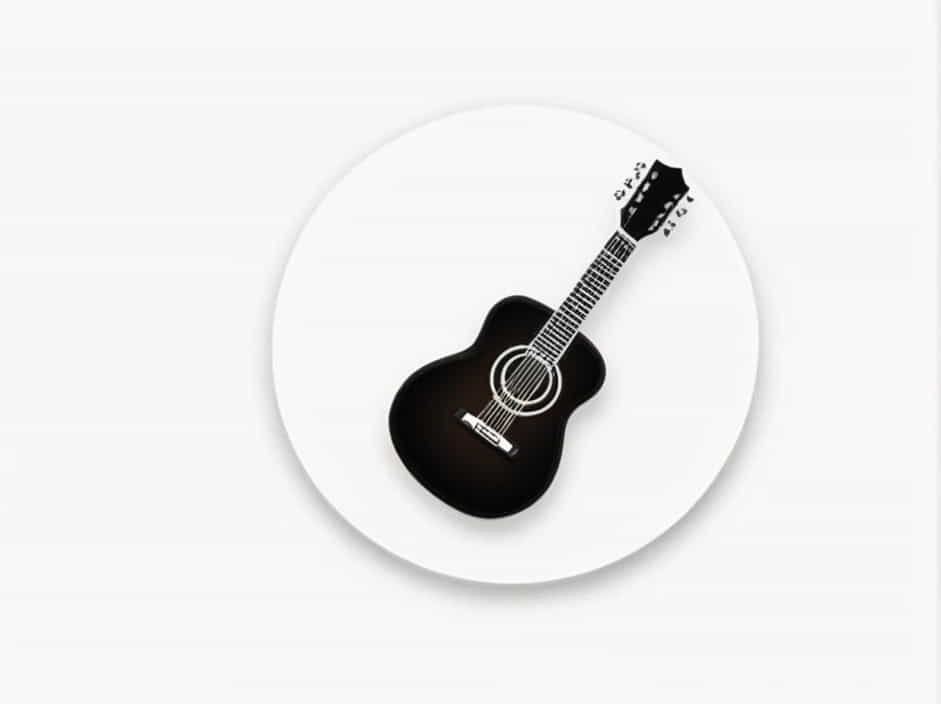Music has the power to bring people together, and one of the most commonly used techniques in playing stringed instruments is strumming. But what exactly does strumming mean? How is it done, and why is it important for musicians?
This topic will explore the meaning of strumming, its techniques, importance, and common patterns. Whether you’re a beginner or an experienced guitarist, understanding strumming is essential for improving your musical skills.
Definition of Strumming
Strumming is the act of brushing or sweeping the fingers or a pick across the strings of a musical instrument, such as a guitar, ukulele, or banjo. It creates rhythm and harmony, making the music sound full and expressive.
Example Sentence:
“He practiced strumming his guitar every day to improve his skills.”
Synonyms for Strumming
- Plucking
- Brushing
- Sweeping
- Picking
- Stroking
1. Why Is Strumming Important?
Strumming plays a vital role in music because it creates rhythm, texture, and dynamics. Without proper strumming, a song may sound dull or lifeless.
1.1 Strumming Adds Rhythm
Rhythm is the heartbeat of music. Strumming sets the tempo and groove of a song.
Example: A steady strumming pattern helps keep the beat in a song.
1.2 Strumming Enhances Expression
Different strumming techniques allow musicians to convey emotion and intensity in their performance.
Example: Soft strumming creates a calm mood, while aggressive strumming adds energy.
1.3 Strumming Makes Playing Easier
Mastering strumming helps musicians play songs more smoothly and transition between chords effortlessly.
Example: Good strumming technique makes difficult songs easier to play.
2. Basic Strumming Techniques
There are two main types of strumming techniques: downstrokes and upstrokes.
2.1 Downstroke Strumming
- Moving the hand downward across the strings
- Produces a strong and full sound
- Often used for emphasizing beats
Example: Downstrokes are commonly used in rock and punk music.
2.2 Upstroke Strumming
- Moving the hand upward across the strings
- Creates a lighter, softer sound
- Used to add variety and texture
Example: Upstrokes are essential for reggae and ska rhythms.
2.3 Alternate Strumming
- Combining downstrokes and upstrokes in a rhythmic pattern
- Helps maintain a steady tempo
- Used in most modern songs
Example: Alternate strumming is the foundation of good rhythm guitar playing.
3. Common Strumming Patterns
Different strumming patterns create different musical styles. Here are some of the most commonly used patterns:
3.1 Basic Downstroke Pattern
D – D – D – D (D = Downstroke)
- Simple and easy for beginners
- Often used in folk and country music
Example: Many beginner guitar songs use a basic downstroke pattern.
3.2 Down-Up Strumming Pattern
D – U – D – U (D = Downstroke, U = Upstroke)
- Creates a smooth and flowing rhythm
- Used in pop, rock, and acoustic music
Example: This pattern works well for singing along with a guitar.
3.3 Reggae Strumming Pattern
X – U – X – U (X = Mute, U = Upstroke)
- A signature sound in reggae and ska music
- Emphasizes off-beats
Example: Reggae music relies on muted downstrokes and upstroke strumming.
4. Tips for Improving Strumming Skills
Mastering strumming takes practice, but following these tips can help you improve faster.
4.1 Relax Your Hand
- Keep your wrist loose
- Avoid strumming too stiffly
- Let the pick or fingers glide naturally
Example: A relaxed hand creates a smoother and more natural sound.
4.2 Use a Metronome
- Helps develop timing and rhythm
- Prevents speeding up or slowing down
Example: Practicing with a metronome ensures steady strumming.
4.3 Experiment with Different Patterns
- Try various strumming techniques
- Play along with different songs
Example: Practicing different patterns improves versatility.
4.4 Listen to Professional Musicians
- Observe how experienced guitarists strum
- Learn from their techniques
Example: Watching live performances can inspire better strumming techniques.
4.5 Practice Daily
- Even 10-15 minutes a day can make a big difference
- Focus on smooth transitions between chords
Example: Daily practice leads to noticeable improvements in strumming skills.
5. Strumming in Different Music Genres
Strumming techniques vary based on the style of music.
| Music Genre | Strumming Characteristics | Example Songs |
|---|---|---|
| Pop | Smooth, rhythmic, balanced | “Perfect” – Ed Sheeran |
| Rock | Strong, energetic, powerful | “Wonderwall” – Oasis |
| Folk | Soft, natural, flowing | “Take Me Home, Country Roads” – John Denver |
| Reggae | Offbeat, syncopated, relaxed | “No Woman, No Cry” – Bob Marley |
6. Strumming vs. Fingerpicking
While strumming involves sweeping the strings, fingerpicking uses individual fingers to pluck the strings.
6.1 Differences Between Strumming and Fingerpicking
| Feature | Strumming | Fingerpicking |
|---|---|---|
| Technique | Sweeping across strings | Plucking individual strings |
| Sound | Rhythmic and full | Melodic and intricate |
| Best For | Accompanying vocals | Solo playing |
Example: Strumming works well for sing-alongs, while fingerpicking adds melody and detail.
7. Interesting Facts About Strumming
- Strumming dates back centuries and was used in early folk music.
- Some musicians strum with fingernails instead of a pick for a unique sound.
- The ukulele has a distinctive “island-style” strumming technique.
- Flamenco guitarists use rapid strumming techniques called “rasgueado.”
Example: Flamenco music has some of the most intricate strumming techniques in the world.
Strumming is an essential technique in playing stringed instruments. It involves brushing or sweeping across the strings to create rhythm and harmony. Whether you are a beginner or an advanced musician, mastering strumming techniques can improve your musical expression and performance.
By practicing different strumming patterns, staying relaxed, and experimenting with various styles, you can become a more confident and skilled guitarist. Strumming is the foundation of rhythm guitar, making it a crucial skill for any musician.
